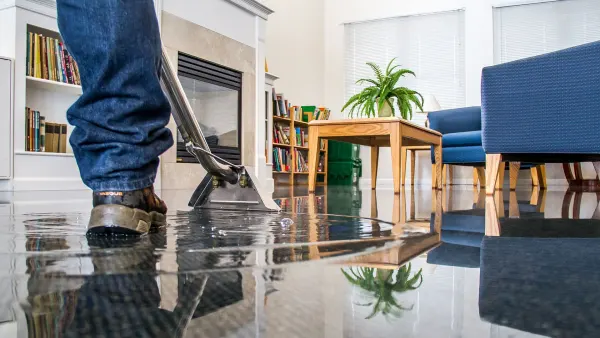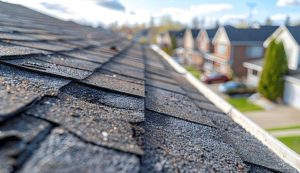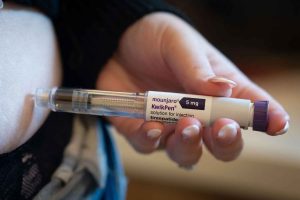Flooding can wreak havoc on homes, businesses, and infrastructure. One of the most critical first steps in Flood Damage Restoration is a thorough assessment by professionals. Without a comprehensive evaluation, it becomes difficult to determine the full scope of destruction, which can result in missed repairs, safety hazards, and long-term structural issues. An expert damage assessment lays the groundwork for proper cleanup, insurance claims, and rebuilding.
Professional assessors from a disaster restoration company like Ideal Response use a combination of experience, tools, and scientific techniques to gauge how badly a property has been affected. Their assessment covers not just visible damage but also hidden issues that could lead to mold growth, foundation deterioration, or electrical hazards if left untreated.
What Are the First Steps in a Flood Damage Inspection?
When a certified technician arrives on-site, their priority is to ensure safety before beginning the inspection. They check for hazards like electrical risks, compromised structural components, and contamination from sewage or chemicals.
Once the site is deemed safe, they begin a detailed walkthrough of the entire property. Here’s what they typically evaluate:
- Water levels: Indications of how deep the floodwaters reached.
- Duration of exposure: How long materials were submerged.
- Building materials: Different materials absorb and retain water differently.
- Structural integrity: Walls, floors, foundations, and roofs are all checked.
- Type of water: Clean, gray, or black water affects both safety measures and the restoration process.
This initial survey gives professionals a general idea of the damage severity, which then leads to a more thorough technical assessment.
How Do Experts Use Moisture Meters and Thermal Imaging?
Advanced tools play a major role in the flood damage evaluation process. Moisture meters are used to detect the amount of water present in materials like drywall, wood, and insulation. These readings help identify areas that are still wet, even if they appear dry on the surface.
Thermal imaging cameras are also employed to detect temperature variations in walls and floors. These differences often indicate moisture pockets behind surfaces—pockets that can go unnoticed during a visual inspection. These tools help disaster restoration companies like Ideal Response provide a far more accurate picture of the actual damage.
By documenting this data, professionals not only support insurance claims but also build a clear action plan for the Flood Damage Restoration process.
Why Is Categorizing the Water Source Important?
Flood damage isn’t just about water volume—it’s also about water quality. Professionals categorize water into three main types:
- Category 1 (Clean Water) – From broken pipes or rainwater. Poses minimal health risk if addressed quickly.
- Category 2 (Gray Water) – From appliances or bathrooms. May contain contaminants.
- Category 3 (Black Water) – From sewage or flooding rivers. Contains harmful pathogens and toxins.
Understanding the water category helps determine the scope of cleaning, what materials can be salvaged, and what must be discarded. For example, porous materials soaked in black water are typically removed entirely, whereas clean water damage may only require drying and disinfecting.
What Structural Components Are Checked for Damage?
Flooding can weaken even the most robust structures. That’s why experts carefully examine the following areas:
- Foundations – Cracks, shifts, or erosion from water undermining the soil.
- Walls and drywall – Signs of warping, sagging, or mold.
- Ceilings and roofs – Water stains, leaks, or structural compromise.
- Flooring – Buckled floorboards, damp carpet, and subfloor damage.
- Insulation – Often saturated and needs replacement.
- Electrical and HVAC systems – Short circuits, corrosion, or mold accumulation.
Each component is graded based on severity. Mild damage might require simple cleaning and drying, while severe damage could call for complete replacement. An experienced disaster restoration company will document this information and use it to build a step-by-step restoration plan.
How Are Mold and Contamination Risks Evaluated?
Mold begins to develop within 24–48 hours after water exposure. Assessors check for visible mold growth and use air quality monitors to detect elevated spore counts. They also collect surface and air samples in high-risk areas.
If contamination is suspected, professionals will test for bacteria and pathogens. This is especially important in Category 2 or 3 water incidents. Kitchens, bathrooms, and basements are key testing zones.
The presence of mold or biological contaminants not only increases the severity rating of the damage but also changes the cleanup protocols. These areas often need to be sealed off and treated with antimicrobial solutions.
What Role Does Documentation Play in the Assessment?
Every assessment includes meticulous documentation. Photos, videos, thermal scans, moisture readings, and written reports provide a complete record of the flood damage. This is critical for:
- Insurance claims – Proof of damage severity and needed repairs.
- Restoration planning – Sequencing tasks and estimating costs.
- Legal requirements – Especially for commercial properties.
A trusted disaster restoration company like Ideal Response provides comprehensive reports that clients can present to insurance adjusters or legal representatives. This ensures that nothing gets overlooked and every claim is properly backed.
How Do Assessments Influence the Flood Damage Restoration Plan?
Once the inspection is complete, professionals develop a custom Flood Damage Restoration plan. This typically includes:
- Water extraction – Immediate removal of standing water.
- Drying and dehumidification – To prevent mold and further damage.
- Material removal – Disposing of unsalvageable items.
- Cleaning and sanitation – Especially in contaminated areas.
- Structural repairs – Fixing or replacing damaged walls, floors, or roofing.
- Restoration and rebuilding – Returning the property to pre-loss condition.
Every task is prioritized based on the assessment. For example, areas with black water contamination are handled first to eliminate health hazards. Spaces with minor damage are often tackled later during the rebuilding phase.
Why Should You Hire Professionals for Flood Damage Assessment?
Flood damage can be deceptive. Even if a room looks dry and safe, moisture could be hiding behind walls or under flooring. DIY assessments often miss these warning signs, leading to costly repairs down the line.
Professional evaluators bring years of experience, specialized equipment, and safety knowledge. They know what to look for, where to look, and how to interpret what they find. More importantly, their objective assessments ensure that no damage goes unnoticed—and no risk is ignored.
When you hire a reputable disaster restoration company like Ideal Response, you’re investing in peace of mind. Their flood damage assessments are not only thorough but also guide the entire restoration journey, from initial cleanup to the final coat of paint.
Final Thoughts: What Should You Expect During Flood Damage Assessment?
A professional flood damage assessment isn’t just a visual glance around the property—it’s a strategic, science-backed evaluation. Experts analyze every factor: water category, material saturation, structural soundness, contamination risks, and future threats like mold. The goal is to give property owners an accurate picture of the damage and a practical path toward restoration.
Whether you’ve experienced a small basement flood or widespread property damage, a detailed assessment is your first line of defense. With trusted companies like Ideal Response, you’ll know exactly where you stand—and what it takes to move forward safely and effectively.








